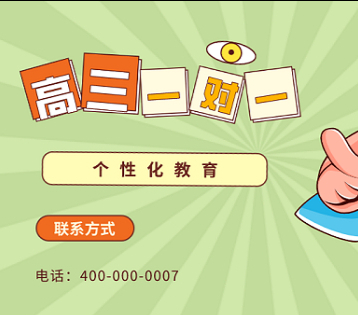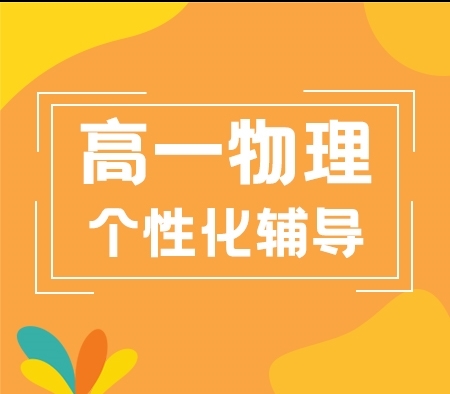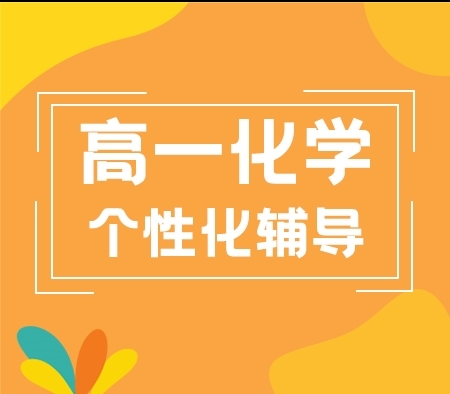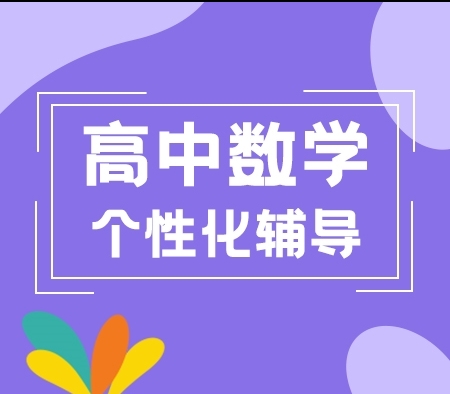2018学年温州九校第一次联考高三年级英语试题整理含参考答案
2018学年温州九校第一次联考高三年级英语试题整理,近期,很多学校联合举行了第一次联考,针对高考生进行了一次测验,用于检测考生们的复习成果。本文,伊顿教育小编为大家整理了2018学年温州九校第一次联考高三年级英语学科试题,有需要的同学可参考本文进行测试哦!
★考试结束前

2018学年温州九校第一次联考高三年级英语学科 试题
考生须知:
1. 答第Ⅰ卷前,考生务必将自己的姓名、准考证号填写在答题卡上。
2. 选出每小题答案后,用铅笔把答题卡上对应题目的答案标号涂黑。如需改动,用橡皮擦干
净后,再选涂其他答案标号。不能答在本试卷上,否则无效。
第Ⅰ卷
第一部分 听力(共两节,30分)
做题时,先将答案标在试卷上。录音内容结束后,你将有两分钟的时间将试卷上的答案转涂到答题卷上。
第一节(共5小题;每小题1.5分,7.5分)
听下面5段对话。每段对话后有一个小题,从题中所给的A、B、C三个选项中选出较佳选项,并标在试卷的相应位置。听完每段对话后,你都有10秒钟的时间来回答有关小题和阅读下一小题。每段对话仅读一遍。
例:How much is the shirt?
A.£19.15. B.£9.18. C.£9.15.
答案是C。
1. How does the woman feel?
A. Surprised B. Relieved C. Regretful
2. Which language does the woman learn online?
A. Spanish B. French C. Japanese
3. When is the woman leaving for the airport?
A. At around 11:00 B. At around 9:00 C. At around 8:30
4. Where will the woman most probably go?
A. To a baker’s house B. To a bank C. To a supermarket
5. What is broken?
A. The telephone. B. The fax machine C. The air-conditioner
第二节(共15小题;每小题1.5分,22.5分)
听下面5段对话或独白。每段对话或独白后有几个小题,从题中所给的A、B、C 三个选项中选出较佳选项,并标在试卷的相应位置。听每段对话或独白前,你将有5秒钟的时间阅读各个小题;听完后,各小题将给出5秒钟的作答时间。每段对话或独白读两遍。
听第6段材料,回答第6、7题。
6. What is the man doing?
A. Changing tickets. B. Buying tickets. C. Booking tickets
7. How much will the man pay for the tickets?
A. $ 25 B. $ 35 C. $ 50
听第7段材料,回答第8至10题。
8. What does Lisa like at the summer camp?
A. Water-skiing B. Horse-riding C. Fishing9. What does Judy think of rock climbing now?
A. It’s dangerous. B. It’s exciting. C. It’s tiring.10. Who stays in the camp all the time?
A. Robert B. Judy C. Jake
听第8段材料, 回答第11至13题。
11. What’s the relationship between the man and Mary?
A.Teacher and student B. Husband and wife C. Brother and sister12. How does Ryan usually go to the kindergarten?
A. On foot B. By car C. By bus13. In which aspect did Ryan get a first?
A. Learning the alphabet. B. Tying the shoes C. Telling time听第9段材料,回答第14至16题。
14. What did Charles think of space travel as a boy?
A. Impossible. B. Attractive C. Uninteresting15. What did Charles consider to be the hardest part of the training?
A. Practicing landing and taking off.
B. Wearing a spacesuit eight hours a day.
C. Moving his arms and fingers.
16. What will the man talk about next?
A. His future plan.
B. His experience on the moon.
C. His feeling of being chosen to go to the moon.
听第10段材料,回答第17至20题。
17. What is the speaker mainly talking about?
A. The importance of a good memory in one’s life.
B. The ways of improving memory.
C. The importance of food.
18. What problem can lack of water cause?
A. People will have difficulty in thinking.
B. People will feel more tired.
C. People will have difficulty in concentrating.
19. Why is sleep important to memory?
A. It can control the senses.
B. It can make people think a lot.
C. It helps the brain review and store information.
20. How many factors are mentioned in developing memory?
A. Two B. Three C. Four
#p#副标题#e#
第二部分 阅读理解(共两节,35分)
第一节(共10小题;每小题 2.5分,25分)
阅读下列短文,从每题所给的A、B、C和D四个选项中,选出较佳选项,并在答题卡上将该项涂黑。
A
From my kitchen windows, I watch colorful birds responding for black-oiled sunflower seeds, split peanuts, and cut grapes and apples on the ground. The scene is delightful and calming.
About three years ago, I noticed a newcomer to this colorful and happy display. It was a baby chipmunk(花栗鼠), apparently on its own. Over that summer, I watched it grow. The brown and black stripes(条状)on its back darkened. The next summer, it was back, and I wondered whether it would trust me to feed it by hand or let me pet it. I decided to employ the tricks I used to persuade wild cats to come close for food: patience, a soft voice, slow moves and repetition. Before it would approach, I’d put down its favorite food—sunflower seeds, bend over and keep very still. I’d leave my open hand in place, unmoving, so the animal would know I wouldn’t seize it. I continued doing this for a few weeks. Finally, late in that second summer, it did show more trust. One day as I offered a seed on my fingertips, it approached and carefully took the seed into its mouth. It never bit my fingers. I was elated that we had made a breakthrough of trust. After about two months of this routine, I went further. With one finger, I petted its back once, but it didn’t move away. I then petted with two fingers. Again, it stayed put, eating seeds.
Today, the Chipmunk comes out of hiding when I call its name, and lets me pet its soft, silky body. Whenever I am doing this, I feel calmer. To my surprise, I also feel a sense of greater respect for nature andits creatures and the opportunity to observe, protect and save wildlife. Most of all, I've saved the wonderful memories gathered during these glorious summer months in my Long Island garden.
21. What did the writer do before the Chipmunk trusted him enough to get closer?
A. Petted its back. B. Offered it food.
C. Called its name. D. Watched it play.
22. What does the underlined word “elated” in the second paragraph mean?
A. disappointed B. excited C. frightened D. puzzled
23. Which of the following can be the best title for the passage?
A. A furry friend and a bond of trust
B. A lovely animal and an adventure
C. A stress reliever and a calm mind
D. A newcomer and its protection
B
Every year, thousands of women suffer life-changing injuries or die during childbirth because hospitals and medical workers skip safety practices known to avoid disaster, a USA TODAY research has found.
Doctors and nurses should do something to check and record blood loss so that they can recognize the danger sooner. They should be giving medicines within an hour of spotting dangerously high blood pressure to avoid strokes (中风).
These are not complex procedures requiring expensive technology. They are among basic tasks that experts have recommended for years because they can save mothers’ lives. Yet hospitals, doctors and nurses across the country continue to ignore them, USA TODAY found.
As a result, women are left to bleed until their organs shut down. Their high blood pressure goes untreated until they suffer strokes. They die of preventable blood clots (堵塞) and untreated infections (感染). Survivors can be left unable to have more children.
USA TODAY obtained more than a half-million pages of hospital quality records and examined the cases of more than 150 women whose deliveries went terribly wrong. Reporters interviewed 75 birthing hospitals to record whether they follow the recommended procedures.
Together, these documents and interviews expose a shocking lack of attention to safety recommendations and widespread failure to protect new mothers.
At dozens of hospitals in New York, Pennsylvania and the Carolinas, fewer than half of pregnant patients were immediately treated for dangerous blood pressure that put them at risk of stroke. At some of those hospitals, less than 15 percent of mothers in danger got recommended treatments, the records show.24. What leads to pregnant mothers’ suffering?
A. Unavoidable infections.
B. Mothers’ blood pressure.
C. Complex treatment procedure.
D. Lack of concern from medical workers.
25. Where does the text probably come from?
A. A travel journal B. A health magazine
C. A science fiction D. An advertisement
26. What is the author’s purpose in writing this text?
A. To share improvements in baby-delivery
B. To recommend a baby-delivery procedure
C. To expose doctor’s lack of medical skills
D. To call for medical staff’s attention to new mothers
#p#副标题#e#
C
For decades, the admission to the eight selective high schools, which rank near the top of U.S secondary schools, has been based on the city’s Specialized High Schools Admissions Test (SHSAT). Tens of thousands of eighth graders seek admission, but only 10% of those admitted are from disadvantaged backgrounds, who make up 67% of New York City students. Therefore, Mayor de Blasio recently put forward a new plan. He’d use New York State’s standardized (标准的) test results plus class ranks to select students for the specialized schools so that high achievers from those disadvantaged backgrounds would get the opportunity.
Critics (评论家) say this will admit youngsters who don’t get top marks on an objective admission test, thus harming the schools’ quality. However, two proven ways can guarantee these schools’ excellence and the mayor’s plan contains both.
The first is screening every student using a universal assessment that almost everyone takes rather than relying on a separate exam. It has been employed in Broward County and it worked really well for poor and minority youngsters.
The second is analyzing scores at the school level instead of the district level, so that it is fair for able students in every “feeder schools”. This makes the qualifying (有资格的) populations diverse in a way that doesn’t favor advantaged kids. That’s why the University of Texas offers admission to the top 7% of graduates of every high school in the state rather than the top 7% statewide.
New York City has long failed its high achievers from disadvantaged backgrounds. So Mayor deBlasio’s reforms could be a step in the right direction — if they’re done right.
27. What do we know from the first paragraph?
A. Secondary high schools are in great demand in New York.
B. The mayor’s new plan has helped the disadvantaged kids.
C. It is competitive to gain admission to the selective schools.
D. 33% of those admitted are from advantaged backgrounds.
28. What is some critics’ concern over the plan?
A. There will be no qualifying students.
B. It will cause too much stress on selection.
C. There will be a decline in the school quality.
D. It will be unfair to the advantaged students.
29. The underlined part in Paragraph 3 implies the standardized test __________.
A. benefits the disadvantaged students
B. does good to the mayor’s political career
C. has been practiced throughout the country
D. has met with challenges in Broward County
30. What is the writer’s attitude towards the plan?
A. Favorable B. Reserved C. Doubtful D. Disapproving
第二节(共5个小题;每小题2分,10分)
根据短文内容,从短文后的选项中选出能填入空白处的较佳选项。选项中有两项为多余选项。
As the world puts increased pressure on kids to be winners, parents tend to make it their mission to help their kids succeed in every possible way. But now there’s a growing realization among teachers and other experts who work with children that kids increasingly need help in learning how to fail. So how do parents teach kids to fail? The following steps may be of help.
Show your understanding
Understand your child when he’s disappointed and frustrated. Don’t just say, “It’s okay. You’ll do better next time.” It’s useless to brush off a child’s feelings of frustration and disappointment. 31For example, “I see you’re really disappointed, and I know you really wanted to do better.”
Make yourself a model
It’s wise for you to first explain that failure is a part of life and you can share examples of “failures” you’ve ever had, such as losing out on a promotion at work or failing to accomplish an important task. 32 Make it a teachable moment
33 You and your child can try to come up with what he can do next time for a better chance at success. For instance, can he study differently or talk to the teacher about the problem? Can he change something in the future? It’s all about problem-solving.
34
It can be very tough to watch your child fall down, but he can only learn how to handle disappointment through trial and error. As books like The Blessings of a Skinned Knee and the newly released How the Best Parents Learn to Let Go underline, parents must stop lending a helping hand. 35
Learning to fail can be painful. But kids will only succeed if they can acquire the skills to handle whatever life throws on their way.
A. Step back and allow kids to fail.
B. Watch your child fall and give a hand.
C. A child’s failure is a chance for parents to teach problem-solving skills.
D. Afterwards, you can model how to handle the disappointment in your life.
E. Instead, you need to change the language to show your true understanding.
F. They must learn to handle their own disappointment through trial and error.
G. Otherwise, you rob children of the very experiences that require problem-solving.
#p#副标题#e#
第三部分:语言运用(共两节,45分)
第一节:完形填空(共20个小题;每小题1.5分,30分)
阅读下面短文,从短文后各题所给的A、B、C和D四个选项中,选出可以填入空白处的较佳选项,并在答题卡上将该选项填黑。
I loved Candy, a most home-loving dog. She was very 36 over my son. She would 37beside his bed for hours, to 38 he was safe.
We 39 to our new house near a busy road when my son was three years old. We were super40 to keep our son away from the front door──without exception.
41 , one morning, our son somehow 42 to escape through his bedroom window. Candy knew that our son was not allowed to 43 the front door without us. As a result, she followed him through the 44 .
We were woken up by the police knocking on the door at 5 am. Extremely 45 , we were informed that our son was nearly killed by a 46 if it had not been for our dog. As the lorry driver told the police, he was driving in the dark when he noticed 47 “light colored” moving 48 ,and a dog was barking towards it. At the last moment, he 49 that it was a child when the barking dog ran out into the road, jumped at the child’s back and 50 him out of the path of the lorry. Unfortunately, the dog was hit by the lorry and 51 . The driver could 52 believe what he saw, as the dog could have 53 the potential danger and known what to do to save the kid’s life.
Since then, not one day in my life has been spent without 54 Candy. And I truly 55why many people treat their pet dogs just as their most beloved friends.
36. A. excited B. grateful C. friendly D. protective
37. A. sit B. company C. sleep D. bark
38. A. find out B. think about C. make sure D. watch out
39. A. went B. moved C. removed D. walked
40. A. delighted B. disappointed C. regretful D. cautious
41. A. Therefore B. However C. Although D. Meanwhile
42. A. managed B. attempted C. succeeded D. wanted
43. A. look through B. get through C. break through D. cut through
44. A. house B. door C. window D. road
45. A. annoyed B. thrilled C. bothered D. shocked
46. A. policeman B. lorry C. stranger D. dog
47. A. anything B. everything C. something D. nothing
48. A. by the way B. at a loss C. in the distance D. out of control
49. A. realized B. felt C. observed D. spotted
50. A. threw B. bit C. caught D. kept
51. A. hurt B. wounded C. survived D. killed
52. A. simply B. hardly C. actually D. unwillingly
53. A.watched B. seen C. got D. sensed
54. A. missing B. attending C. feeding D. thinking
55. A. judge B. consider C. understand D. suppose
第Ⅱ卷
注意:将答案写在答题卡上。写在本试卷上无效。
第三部分 语言运用(共两节,45分)
第二节:(共10个小题;每小题1.5分,15分)
阅读下面材料,在空白处填入适当的内容(1个单词)或括号内单词的正确形式。
If a little humanlike robot begged you not to shut it off, would you show sympathy?
In an experiment 56 (intend) to find out how people treat robots when they act like humans, many participants struggled to power down a begging robot named Nao. 57 experiment was conducted by researchers in Germany, whose findings 58 (publish) in the scientific journal PLOSOne.
Nao, 59 was designed to beg about half of the participants not to switch it off but not the other half, was used 60 (measure) if his begging affected how people reacted.
In one previous experiment, researchers found that people preferred communicating with robots with complementary(互补的) personality characteristics to 61 (they) own. And since robots can exhibit social characteristics either 62 (speak) with human voices or taking the shape of a human body, the research suggests that people tend to react “ 63 (especial) social to them.”
The researchers said a possible 64 (explain) for their results was that people regarded Nao's begging 65 “a sign of making its own decision.”
#p#副标题#e#
第四部分 写作(共两节,40分)
第一节:应用文写作(15分)
假定你是李华,你急需购买一些适合你自己阅读水平的英文小说,希望得到你的英国朋友Jack的帮助,请你给他写一封邮件。内容包括:
1. 说明书籍要求;
2. 期望代为购买;
3. 询问支付方式;
注意:
1. 词数80左右;
2. 可以适当增加细节,以使行文连贯。
___________________________________________________________________________
___________________________________________________________________________
___________________________________________________________________________
第二节:读后续写(25分)
阅读下面短文,根据所给情节进行续写,使之构成一个完整的故事。
It was the first day of our new grade. Everyone in the classroom was chatting happily, excited to see each other again after the long holidays. When the door slid open, all of us stopped talking and turned to look. In came our teacher Ms. Sullivan, followed by an ordinary-looking boy.
“This boy’s name is Rafael.” Ms. Sullivan announced. “He’s a transfer student (转校生), and he’s going to be in our class starting from today. Make sure all of you welcome him warmly.”
The class clapped. But I didn’t want to have a second look at the newcomer, for he had no outstanding qualities considering his small figure and casual T-shirt.
“Oh, I forgot to mention one thing.” Ms. Sullivan spoke up. “Rafael actually has hearing problems. Normally he would have hearing aids on, but his old ones have just been broken. His doctor suggested that he stay at home until he got his new ones. However, Rafael insisted on attending his first day of school. So if you want to communicate with him, you have to write it on a piece of paper.”
This single speech sent the whole class up into an uproar (嘈杂). Some students looked at each other with expressions of surprise. Others voiced cries of concern out of pity.
Ms. Sullivan calmed everyone down. “I'd like someone to personally help him out throughout the day. Do I have any volunteers?”
“How can a disabled person be intelligent?” I thought to myself. I refused to raise my hand, expecting someone else would. But nobody did or said anything. Dead silence spread across the classroom.
It was by total bad luck that my eyes happened to meet Ms. Sullivan’s.
“How about you, James?” She asked me. “Is it okay for you to take care of Rafael just for today?”
It is difficult to refuse a request by someone, especially if that person is a teacher. I sighed and nodded slightly. Ms. Sullivan gestured for Rafael to sit beside me and then asked us to share our holiday stories with the class.
注意:
1. 所续写短文的词数应为150左右;
2. 应使用5个以上短文中标有下划线的关键词;
3. 续写部分分为两段,每段的开头语已为你写好;
4. 续写完成后,请用下划线标出你所使用的关键词语。
Paragraph 1:
Immediately, the class became excited. _________________
Paragraph 2:
Then Rafael rose and walked onto the platform. __________________________
以上是小编为大家整理的关于2018学年温州九校第一次联考高三年级英语试题,不知道大家做的怎么样呢?做完的同学可点击:2018学年温州九校第一次联考高三年级英语试题参考答案
- 热门课程
- 热门资讯
- 热门资料
- 热门福利
-
 描述“雨”的诗句有哪些?你都知道多少!雨,这一寻常的自然现象,在诗人笔下却有着千般姿态、万种风情,古往今来,无数文人墨客将雨融入诗篇,或借雨抒情,或因雨绘景。从清新灵动的春雨,到磅礴迅猛的夏雨,再到惆怅寂寥的秋雨,乃至寒冽凄清的冬雨,每一场雨都在诗句中被赋予了独特的生命。想知道那些流传千古的诗句是如何精妙地描绘雨的吗?接下来,就一同
描述“雨”的诗句有哪些?你都知道多少!雨,这一寻常的自然现象,在诗人笔下却有着千般姿态、万种风情,古往今来,无数文人墨客将雨融入诗篇,或借雨抒情,或因雨绘景。从清新灵动的春雨,到磅礴迅猛的夏雨,再到惆怅寂寥的秋雨,乃至寒冽凄清的冬雨,每一场雨都在诗句中被赋予了独特的生命。想知道那些流传千古的诗句是如何精妙地描绘雨的吗?接下来,就一同 -
 姽婳嫣然怎么读?到底有什么含义?“姽婳嫣然” 是一组富有文学色彩的词语,常出现在古典文学作品或雅致的表达中,现代多数人对其正确读音和具体含义并不熟悉,接下来将先确定这两个词的标准读音,再结合其词义本源与使用语境解析含义,助力大家准确认知这一词语组合。 一、姽婳嫣然怎么读? “姽婳嫣然”这四个字读作guǐ huà yān r
姽婳嫣然怎么读?到底有什么含义?“姽婳嫣然” 是一组富有文学色彩的词语,常出现在古典文学作品或雅致的表达中,现代多数人对其正确读音和具体含义并不熟悉,接下来将先确定这两个词的标准读音,再结合其词义本源与使用语境解析含义,助力大家准确认知这一词语组合。 一、姽婳嫣然怎么读? “姽婳嫣然”这四个字读作guǐ huà yān r -
 秦学教育高考冲刺班有全科冲刺吗?孩子基础一般行不行?很多孩子学习基础一般,理解能力也不高,面对这样的情况家长们就希望找个高效的高考冲刺班帮助孩子提升,今天我就以秦学教育高考冲刺班为例,给大家好好讲讲,帮助你们做出更好地选择。 一、秦学教育高考冲刺班有全科冲刺吗? 秦学教育高考冲刺班能覆盖高考所有科目,秦学针对高考冲刺的需求,设计了完整的全科教
秦学教育高考冲刺班有全科冲刺吗?孩子基础一般行不行?很多孩子学习基础一般,理解能力也不高,面对这样的情况家长们就希望找个高效的高考冲刺班帮助孩子提升,今天我就以秦学教育高考冲刺班为例,给大家好好讲讲,帮助你们做出更好地选择。 一、秦学教育高考冲刺班有全科冲刺吗? 秦学教育高考冲刺班能覆盖高考所有科目,秦学针对高考冲刺的需求,设计了完整的全科教 -
 黄河小班课有没有家长去过?孩子提升快吗?孩子学习跟不上,家长心里着急,就想着找个合适的小班课让孩子更好地学习,那么黄河的小班课效果怎么样?有没有家长送孩子去过呢?今天我就来给大家介绍一下。 一、黄河小班课有没有家长去过? 黄河小班课的口碑和评价一直都挺不错的,很多家长都会在报名前带着孩子去过学校参观一番,一般学校都会有开放日和试听
黄河小班课有没有家长去过?孩子提升快吗?孩子学习跟不上,家长心里着急,就想着找个合适的小班课让孩子更好地学习,那么黄河的小班课效果怎么样?有没有家长送孩子去过呢?今天我就来给大家介绍一下。 一、黄河小班课有没有家长去过? 黄河小班课的口碑和评价一直都挺不错的,很多家长都会在报名前带着孩子去过学校参观一番,一般学校都会有开放日和试听
-
 2022高考英语基础知识点!西安伊顿老师带你了解!2022高考英语基础知识点!西安伊顿老师带你了解!高中的英语是一个需要长期积累以及记忆的科目,在高考中只有针对这些知识进行一定的了解和积累,才可以在考试中取得好成绩。针对这种情况,小编请到了西安伊顿老师来给大家总结归纳一下关于高考英语基础知识点的记忆内容,希望对大家有所帮助。对于英语还是需要靠日
2022高考英语基础知识点!西安伊顿老师带你了解!2022高考英语基础知识点!西安伊顿老师带你了解!高中的英语是一个需要长期积累以及记忆的科目,在高考中只有针对这些知识进行一定的了解和积累,才可以在考试中取得好成绩。针对这种情况,小编请到了西安伊顿老师来给大家总结归纳一下关于高考英语基础知识点的记忆内容,希望对大家有所帮助。对于英语还是需要靠日 -
 关于“呐喊与行动那个更重要”的辩论稿写作指导!一直以来,辩论稿的写作都是大家司空见惯的,但是也是很多同学容易忽视的。现在的语文作文考察的范围和广度越来越大,涉及到的文体也越来越多,因此大家在备考语文作文的时候,还是要增加自己的知识面,增加自己的见识。辩论稿大家见得比较多,但是在语言文字上以及结构上的学习,还是非常值得探究的,下面小编给大家分享了一则辩论稿,大家可以练习一下。
关于“呐喊与行动那个更重要”的辩论稿写作指导!一直以来,辩论稿的写作都是大家司空见惯的,但是也是很多同学容易忽视的。现在的语文作文考察的范围和广度越来越大,涉及到的文体也越来越多,因此大家在备考语文作文的时候,还是要增加自己的知识面,增加自己的见识。辩论稿大家见得比较多,但是在语言文字上以及结构上的学习,还是非常值得探究的,下面小编给大家分享了一则辩论稿,大家可以练习一下。 -
 “直播带货”有关的作文写作指导!立意和审题指导!高中的作文写作更多的是来自于社会现象的思考,或者生活的思考,所以高中的同学在写作文的时候可以从生活细节入手,寻找素材,因为任何题目都是取之于生活,进而引发的一系列的思考行为。本次伊顿教育小编给大家分享的这篇作文也是一个社会现象的评述,材料内容是关于“直播带货”,这个大家都是不陌生的,而且有的同学也是参与者,所以对于此也是非常的熟悉的。下面我们可以来看看这篇作文写作的指导。
“直播带货”有关的作文写作指导!立意和审题指导!高中的作文写作更多的是来自于社会现象的思考,或者生活的思考,所以高中的同学在写作文的时候可以从生活细节入手,寻找素材,因为任何题目都是取之于生活,进而引发的一系列的思考行为。本次伊顿教育小编给大家分享的这篇作文也是一个社会现象的评述,材料内容是关于“直播带货”,这个大家都是不陌生的,而且有的同学也是参与者,所以对于此也是非常的熟悉的。下面我们可以来看看这篇作文写作的指导。 -
 2021年9月山水联盟高三开学联考数学试卷及答案(原版)!2021年9月山水联盟高三开学联考已经结束,伊顿教育小编给大家整理了本次联考的数学试卷以及答案,各位相关的小伙伴可以参考一下。对于高三的学习,小编建议大家在每一次的考试之后,都能够仔细的分析一下自己的失分点,对于自己没有掌握的知识点可以尽早的掌握。
2021年9月山水联盟高三开学联考数学试卷及答案(原版)!2021年9月山水联盟高三开学联考已经结束,伊顿教育小编给大家整理了本次联考的数学试卷以及答案,各位相关的小伙伴可以参考一下。对于高三的学习,小编建议大家在每一次的考试之后,都能够仔细的分析一下自己的失分点,对于自己没有掌握的知识点可以尽早的掌握。




















 All right reserved
All right reserved
